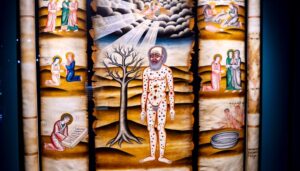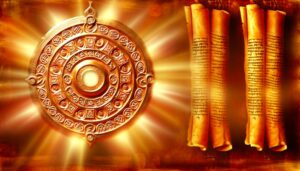Red Hair Meaning in the Bible: Distinction and Strength
In the Bible, red hair frequently holds symbolic significance, often associated with divine favor and unique destiny. Esau, described as “red all over” (Genesis 25:25), embodies impulsiveness and primal energy.
In contrast, King David‘s “ruddy” complexion (1 Samuel 16:12) signifies divine selection and warrior spirit. Red hair highlights the set-apart nature of pivotal biblical figures, serving as a physical metaphor for their spiritual and prophetic roles.
These varied representations suggest deeper theological themes and cultural contexts that underscore the interplay between physical traits and divine purpose in scriptural narratives. Explore further to uncover the richness of these biblical themes.

Biblical Meaning of Red Hair: Passion, Strength, and Individuality
| Interpretation | Meaning | Explanation |
|---|---|---|
| Passion and Strength | Red is often associated with strong emotions such as passion or strength. | The color red in the Bible, such as in Genesis 25:25 (Esau being born “red and hairy”), is linked to vigor and earthly strength, with Esau representing a strong but impulsive character. |
| Earthliness and Humanity | Reflects physicality and connection to the earth. | Red, as the color of blood, can symbolize humanity and earthly nature, seen in figures like Esau. His red hair can symbolize someone deeply connected to the physical world. |
| Individuality | Uncommon traits like red hair could symbolize uniqueness or being set apart. | Just as people with distinct physical features often stand out, red hair could be seen as a mark of someone unique or distinguished in biblical symbolism. |
| Impulsiveness or Fervor | May represent impulsive behavior or fervor. | Esau’s red hair and his impulsive nature in Genesis 25:29-34 (selling his birthright for food) can reflect a strong but sometimes reckless spirit. |
Esau: The Fiery Redhead

In the biblical narrative, Esau’s red hair is not merely a physical characteristic but serves as a symbolic element, reflecting his impulsive and passionate nature.
Genesis 25:25 depicts Esau as being ‘red, all over like a hairy garment,’ indicating a fiery temperament. This vivid description correlates with his later actions, such as impulsively selling his birthright for a mere bowl of stew (Genesis 25:29-34).
The red hue signifies a primal, untamed energy, aligning with his role as a hunter and a man of the field (Genesis 25:27).
Consequently, Esau’s red hair encapsulates a broader theological message about the perils of yielding to immediate desires, illustrating the biblical theme of the consequences of impetuous decisions.
King David’s Reddish Hue
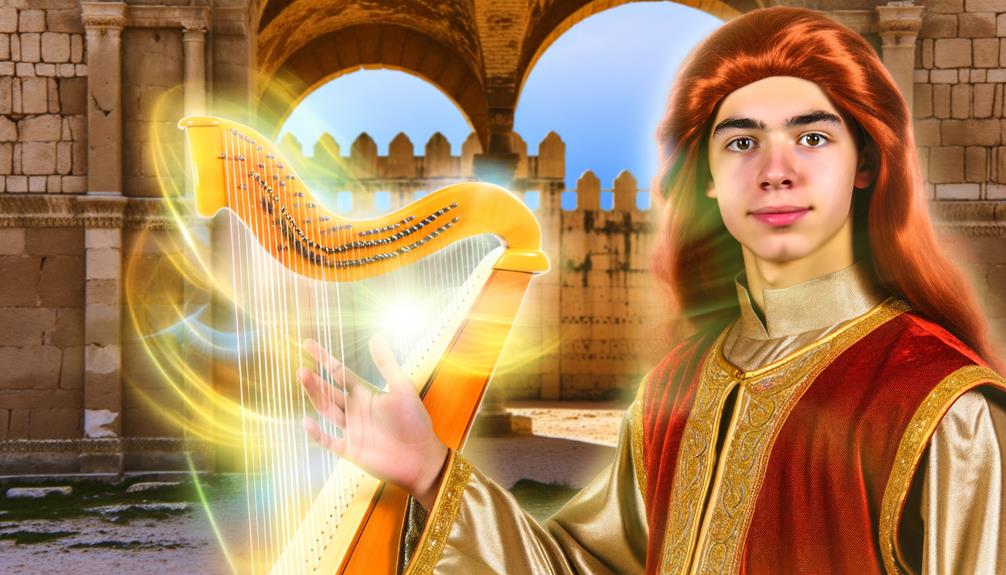
The biblical description of King David as ‘ruddy‘ (1 Samuel 16:12) invites an analysis of the term’s implications within scriptural context.
Symbolically, this reddish hue has been interpreted to signify essence, divine favor, and a warrior’s spirit.
Placing these interpretations within the historical context of ancient Israel enhances our understanding of David’s unique role and significance in biblical narratives.
Biblical Description Analysis
King David’s reddish hue, as described in the scriptures, serves as a crucial marker of his distinctiveness and divine favor in biblical narratives.
In 1 Samuel 16:12, David is described as ‘ruddy, with beautiful eyes and a handsome appearance.’ The term ‘ruddy’ (Hebrew: ‘admoni) is significant, suggesting a complexion that stands out among his peers.
This physical description not only highlights David’s unique appearance but also alludes to his chosen status by God. The scriptural emphasis on his reddish hue may symbolize vibrancy and energy, aligning with his future role as a dynamic leader of Israel.
Such descriptions are rare in the Bible, therefore underscoring the divine selection and exceptional nature of King David in the theological context.
Symbolic Interpretations Explored
David’s reddish hue, as referenced in biblical texts, invites various symbolic interpretations that explore its theological and cultural significance.
Scripturally, David’s distinct appearance is noted in 1 Samuel 16:12, where he is described as ‘ruddy, with a fine appearance and handsome features.’ This description has led scholars to view his red hair as a symbol of energy, divine favor, and kingly attributes.
In theological discourse, the reddish hue is often interpreted as an indication of David’s passionate and vigorous character, traits deemed crucial for his role as a divinely chosen king.
Furthermore, in a broader cultural context, red hair might signify a unique mark of distinction, setting David apart as an individual with a special destiny ordained by God.
Historical Context Considered
Examining the historical context of ancient Israel, the reference to David’s reddish hue in 1 Samuel 16:12 demands a nuanced understanding of its significance within the socio-cultural and religious milieu of the time.
In the ancient Near East, physical traits often carried symbolic weight. David’s ‘ruddy’ appearance, described as ‘admoni’ in Hebrew, can be indicative of liveliness, youthful vigor, and divine favor.
Additionally, red hair was rare among Semitic people, potentially setting David apart as a divinely chosen leader. This distinctiveness aligns with his role as the anointed king, establishing a visual and symbolic marker of his God-ordained destiny.
Consequently, David’s reddish hue not only denotes physical characteristics but also underscores theological themes of chosenness and divine purpose.
Symbolism of Red Hair
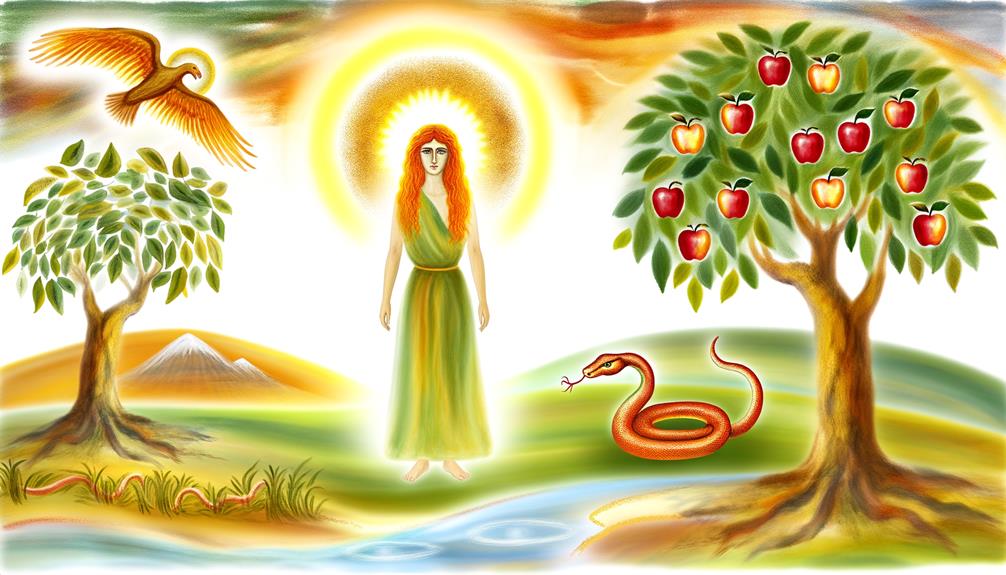
The symbolism of red hair in the Bible often intersects with themes of divine favor and the distinctiveness of certain biblical characters.
For instance, King David’s reddish hue is frequently interpreted as a sign of God’s chosen leadership.
Similarly, the unique attribute of red hair can symbolize a set-apart nature, highlighting individuals who play pivotal roles in biblical narratives. Just as how a broken crayon can still color, those with red hair may possess a strength and resilience that allows them to stand out and make a lasting impact. In biblical stories, red-haired figures such as Esau are often portrayed as complex and powerful characters, emphasizing the idea that uniqueness and individuality can still bring about significant change, even in the face of adversity. After all, broken crayons still color, and red hair can serve as a powerful reminder of the beauty and strength found in diversity.
Divine Favor Indication
In biblical narratives, red hair is often interpreted as a symbol of divine favor, frequently associated with individuals chosen by God for specific purposes. This chromatic symbolism underscores a theological perspective where physical traits mirror spiritual destinies.
For instance, the Hebrew Scriptures recount how David, described as ruddy, was selected by God to be king over Israel, signifying divine endorsement (1 Samuel 16:12).
Moreover, the unique trait of red hair in biblical texts can be seen as a divine mark, setting individuals apart for significant roles within God’s salvific plan.
This interpretation invites believers to ponder the deeper meanings behind physical characteristics, suggesting that God’s providence extends to the minutiae of human existence, imbuing them with spiritual significance.
Unique Biblical Characters
Among the notable figures in biblical narratives, individuals with red hair often carry profound symbolic weight, serving as exemplars of divine purpose and spiritual significance.
Esau, the firstborn of Isaac, is described as having a ruddy appearance (Genesis 25:25). His red hair symbolizes his earthy, impulsive nature and contrasts with his brother Jacob, who embodies spiritual aspiration.
Similarly, King David is depicted as ruddy (1 Samuel 16:12), a trait symbolizing his vigor and God’s chosen favor despite his humble beginnings. This distinctive feature underscores the thematic dichotomy between human frailty and divine selection.
Accordingly, red hair in biblical accounts often accentuates the unique roles and destinies assigned to these characters by divine providence.
Red Hair in Prophecy

Several biblical prophecies and narratives subtly reference individuals with red hair, often imbuing them with significant symbolic meaning. The portrayal of red-haired characters can be found in various scriptural contexts, each carrying unique connotations that enrich the understanding of these texts.
For instance:
- Eschatological Figures: Prophecies occasionally depict red-haired individuals as harbingers of change or turmoil, symbolizing a departure from the norm.
- Divine Selection: Red hair in certain narratives signifies divine selection or favor, as seen in the anointment of King David.
- Judgment and Wrath: In prophetic literature, red hair may also symbolize judgment or wrath, aligning with the color’s association with blood and fire.
These symbolic uses invite deeper theological reflection on the role of physical attributes in biblical prophecy.
Interpretations by Theologians
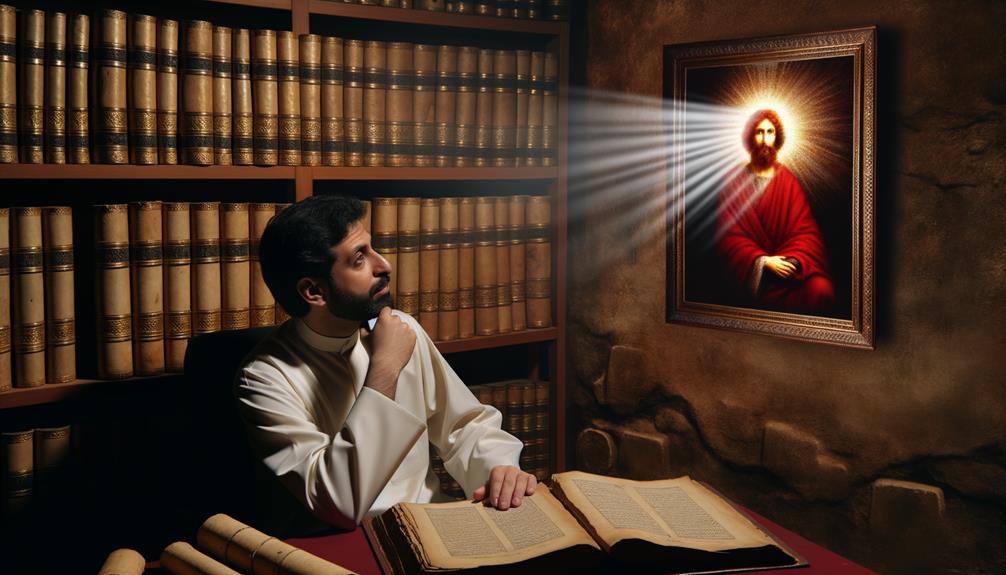
The symbolic representation of red hair in biblical prophecy has prompted extensive theological discourse, with scholars offering diverse interpretations grounded in scriptural exegesis and historical context.
Some theologians posit that red hair, as seen in figures like Esau, signifies a connection to the earth and primal nature, reflecting a complex interplay between human frailty and divine purpose.
Others interpret red hair as emblematic of passion and impulsiveness, traits that serve as cautionary tales within the biblical narrative.
Additionally, certain scholars argue that the rarity of red hair, especially in ancient Semitic populations, imbues it with a sense of the extraordinary or the otherworldly, thereby inviting deeper esoteric analysis.
These varied interpretations underscore the richness of biblical symbolism and its multifaceted dimensions.
Cultural Impacts Over Time
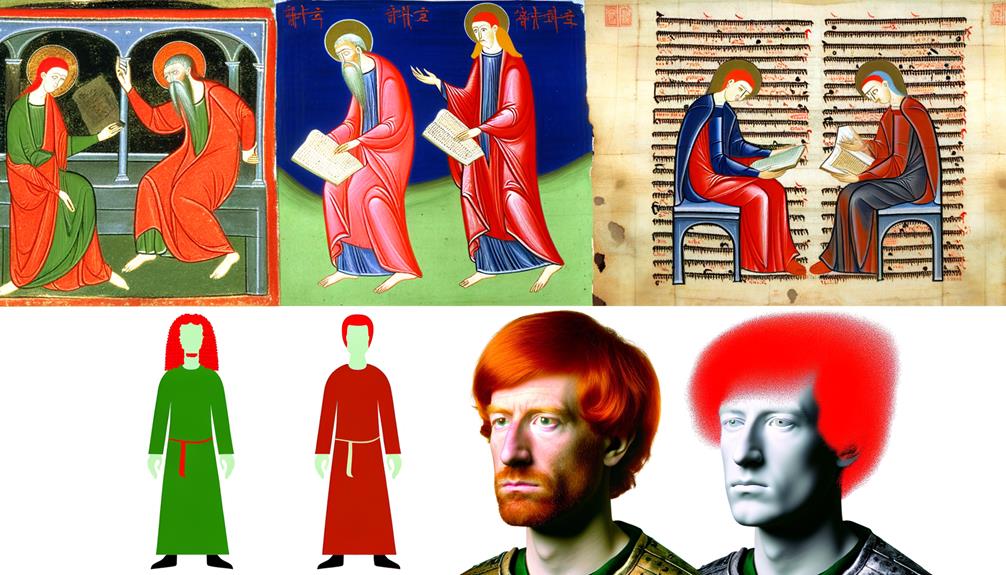
Historical and scriptural analyses reveal that the symbolic significance of red hair in biblical narratives has influenced cultural perceptions and artistic representations across various epochs. These influences can be categorized into three primary areas:
- Medieval Art: Red hair in depictions of biblical figures, such as Judas Iscariot, often symbolized betrayal and moral corruption, reflecting cultural biases of the period.
- Literature: The characterization of red-haired individuals in medieval and Renaissance literature frequently drew upon biblical associations, portraying them as fiery or treacherous.
- Modern Media: Contemporary portrayals have evolved, with red hair now often symbolizing uniqueness and independence, though traces of historical prejudices occasionally persist.
These cultural impacts underscore the enduring legacy of biblical symbolism in shaping societal attitudes towards physical traits like hair color.
Conclusion
Throughout biblical narratives, the presence of red hair serves as a potent symbol imbued with complexity.
From Esau’s fiery demeanor to King David’s distinguished appearance, red hair intertwines with themes of passion, leadership, and divine prophecy.
Theological interpretations and cultural impacts across centuries underscore this distinctive trait’s enduring significance.
Ultimately, red hair in the Bible acts as a vivid thread woven into the rich tapestry of scriptural symbolism, illuminating deeper spiritual truths and societal reflections.

